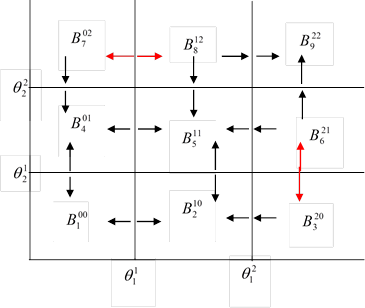Characterisation of Singular Domains in Threshold-Dependent Biological Networks
Keywords:
Discontinuous System, Singular Domain, Threshold-Dependent Network, Biological System, Piecewise Linear ModelsAbstract
Threshold-dependent networks behave like piecewise smooth system which belongs to a class of systems with discontinuous right hand side. It can be studied with piecewise linear differential equations. At threshold values and their intersections, known as switching boundaries and surfaces, the state of such networks is not defined because of singularity at such points. These states are termed singular states or domains of the network. This study is to characterise, in terms of number, singular domains of any order in a network and the total number of such domains. It shall also propose new definitions for walls which are switching domains of order one. The new definition, which derives from Fillipov’s First Order Theory on characterisation of (sliding) wall, shall be shown to prove better than existing ones as it can reveal intrinsic behaviours in such networks.

Published
How to Cite
Issue
Section
Copyright (c) 2022 Benitho Ngwu, Godwin C. E. Mbah, Chika O. Mmaduakor, Sunday Isienyi, Oghenekevwe R. Ajewole, Felix D. Ajibade

This work is licensed under a Creative Commons Attribution 4.0 International License.





